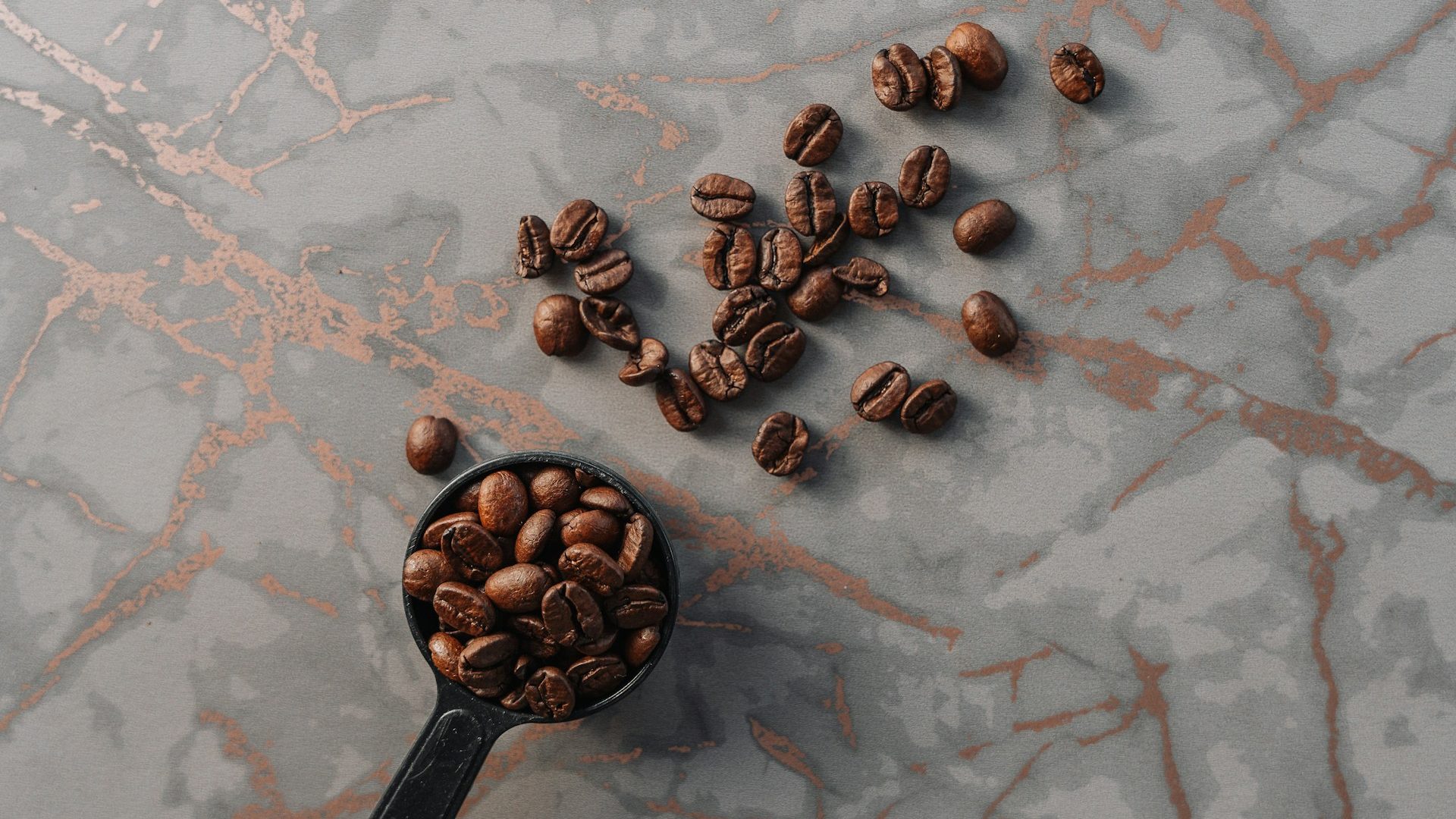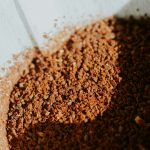Table of Contents
Don’t toss those old coffee beans just yet! From crafting to composting, there’s a myriad of ways to give new life to your stale brew. Coffee enthusiasts can rejoice knowing that those specialty coffee bags can serve more purposes beyond the cup. Whether it’s for beauty, décor, or even as an aid in the garden, repurposing coffee beans is a practical embodiment of creativity and sustainability. Embrace these ingenious ideas and maximize the potential of every bean.
Recognize When Coffee Beans Go Stale
Spotting unused beans that have gone stale is straightforward. The vibrant taste and aroma that defines freshly roasted coffee fade, leaving a lackluster brew behind. If your morning cup lacks its usual pizzazz, it’s time to repurpose those beans.
Physical Changes in Aged Coffee Beans
As coffee beans age, they undergo physical changes that are easy to spot. Their once glossy surface becomes dull as essential oils dissipate. The beans become brittle, and the rich color may fade, indicating the natural process of staleness has taken hold.
However, these physical signs don’t mean the beans are wasted. On the contrary, they can still be valuable in many non-brewing applications. A coffee lover can take pride in finding new uses for these beans, demonstrating respect for the product and the effort of coffee farms.
Taste and Aroma: The True Indicators
The true test of a coffee bean’s freshness is its taste and aroma. A fresh, vibrant bean will burst with a spectrum of flavors and a scent that fills the room. Conversely, old beans have a muted flavor profile and lack the aromatic punch that invigorates the senses, making them less ideal for a morning iced coffee but perfect for repurposing.
From enhancing plant growth in garden compost to serving as ice cubes for a chilled coffee drink, old beans still have much to offer. By acknowledging these indicators, you can ensure that you absorb nutrients from your coffee in more ways than one.

10 Inventive Uses for Aging Coffee Beans
Aging coffee beans need not be discarded; instead, they can be repurposed in innovative and environmentally friendly ways. Here are ten creative ideas to help you make the most of every last bean.
1. Homemade Cold Brew Elixir
Transform old beans into a homemade cold brew coffee by using a simple brewing method that accentuates their remaining flavors. This approach is perfect for beans past their prime, as the cold brew process masks any staleness, resulting in a rich and smooth concentrate.
Whether enjoyed over ice or as a base for creative beverages, cold brew coffee made from older beans is a cost-effective and delicious way to repurpose your brew. It’s a testament to the versatility of coffee and the ingenuity of coffee shops in making every bean count.
2. Reinvent Your Skin Care With a Coffee Scrub
Combine a cup of ground coffee with coconut oil and brown sugar to create an exfoliating scrub that will revitalize your skin. The texture and acidic content of coffee make it a natural exfoliant, perfect for sloughing away dead skin cells and leaving you with a refreshed coffee body.
Enhanced with vanilla extract, this cleaning scrub not only exfoliates your skin but also envelops you in a warm, comforting aroma. It’s a luxurious way to repurpose coffee beans and pamper yourself with organic, homemade skincare.
3. Crafting Exquisite Coffee-Scented Candles
For those who enjoy DIY projects, old coffee beans can be used to craft coffee-scented candles. These tablepieces not only provide a delightful aroma but also add a touch of elegance to any room.
By embedding beans in the wax, you can create unique candles that release the beloved scent of coffee as they burn. It’s a perfect project for a cozy weekend at home and a charming way to recycle unused beans.
4. Infusing Home Baked Delights With Coffee Flavors
Enhance your home baking with the robust flavor of coffee. A cup of coffee can be incorporated into recipes, turning unused beans into a culinary delight. The possibilities are endless, from coffee-infused chocolate cake to a brewing guide for flavorful sea salt cookies.
Including freshly roasted coffee in your baking not only imparts an irresistible taste but also gives purpose to beans that might otherwise be discarded. It’s a creative and delicious way to utilize every bean to its fullest potential.
5. The Art of Coffee-Based Decor
Unused beans can serve as the foundation for a variety of coffee-based décor items. From filling glass jars to adding an aromatic touch to DIY projects, coffee beans offer both aesthetic and fragrant appeal.
Whether it’s creating a centerpiece for your dining table or accentuating the shelves of a home office, coffee beans can enhance the ambiance of any space. It’s a simple yet effective way to decorate with a material that many have readily available at home.
6. Coffee Beans as Natural Deodorizers
Old coffee beans can be transformed into natural deodorizers. Dry grounds possess an innate ability to neutralize odors, making them ideal for freshening up various spaces in your home.
Place a bowl of dry grounds in your refrigerator or closet, and let the coffee’s natural fragrance work its magic. This eco-friendly solution repurposes what would otherwise be wasted, offering a practical use for stale beans.
7. A Unique Approach to Meat Tenderizing
Coffee contains natural acids and enzymes that make it effective at tenderizing meat, offering an alternative to traditional methods. A dry rub made from ground beans can infuse your meat with a deep, rich flavor while also softening its texture.
This technique repurposes unused coffee and serves as a flavor enhancer for your culinary creations. It’s an innovative way to give a second life to old beans and elevate your cooking.
8. Unleash Your Inner Barista With New Brewing Methods
Explore new brew methods using old beans without the fear of waste. Fresh coffee beans are often reserved for perfecting your technique, but older beans can be used for practice runs on brewing equipment, making the learning process more sustainable.
This approach allows you to develop your barista skills while conserving valuable resources. It’s a practical way to utilize beans that are past their prime but still have much to offer in the realm of coffee exploration.
9. Transforming Coffee Beans Into a Rich Fabric Dye
Coffee beans can be repurposed as a natural dye, offering a sustainable option for coloring textiles. This method can also be used to dye paper, creating a vintage look for crafts and handmade stationery.
Using coffee as a dye is not only environmentally friendly but also provides a unique and rich hue that can’t be replicated with synthetic dyes. It’s a testament to the versatility of coffee beyond the beverage.
10. Using Coffee Beans for Garden Compost Enhancement
Add old coffee grounds to your compost pile to enrich the soil with essential nutrients. This practice can improve plant growth and help absorb nutrients more effectively. Old beans contribute to a robust compost made with coffee grounds, which a study found to repel insects naturally.
Whether you brew cups of coffee daily or indulge in chocolate-covered espresso beans, reuse your old coffee in the garden. Adding coffee grounds to the compost not only benefits your plants but also aligns with eco-friendly practices, reducing waste from coffee consumption.

Minimizing Coffee Waste in Your Routine
To ensure you savor the natural flavors of specialty coffee, it’s essential to adopt habits that minimize waste. Firstly, purchase freshly roasted beans in quantities that you can consume before they lose their freshness. This not only guarantees delicious coffee with every cup but also reduces the chances of having surplus beans. Additionally, proper storage is crucial; consult a guide to coffee bean storage to learn how to best preserve their quality. Lastly, grinding small amounts of coffee as needed can also help maintain the beans’ flavor and prevent waste.
Rejuvenate Your Coffee Ritual
Revitalizing your coffee routine can start with the simple act of being mindful of the quantity and storage of your coffee beans. When you buy freshly roasted coffee, you’re investing in the rich, natural flavors that make your daily brew delightful. Store your beans in an airtight container away from light and moisture to maintain this quality. This helps preserve the beans’ integrity and prolongs their shelf life, ensuring that every cup is as fresh as possible.
Furthermore, consider your coffee habits and patterns. Do you often find yourself with excess beans? Adjust your purchasing habits to align with your actual consumption. By doing so, you’re not only enhancing your coffee experience but also contributing to a more sustainable lifestyle. Embrace the ritual of preparing your coffee, from measuring the beans to enjoying the brewed masterpiece, and you’ll find that less waste naturally follows.
Embracing Sustainability in Coffee Consumption
Embracing sustainability in your coffee consumption goes beyond just reducing waste—it’s about making conscious decisions that benefit both you and the environment. One way to do this is by repurposing coffee grounds that might otherwise be discarded. For example, sprinkle coffee grounds in your garden to deter ants and enrich the soil. Furthermore, use a storage container specifically designed for coffee to keep your beans at their peak for longer, reducing the need to discard stale beans.
Another aspect of sustainability involves exploring the world of coffee with a mindful approach. This includes understanding the source of your beans and supporting fair trade practices. It also means being aware of the impact your coffee habits have on the environment, from the water used in brewing to the energy consumed by your coffee maker. By taking these factors into account, you can enjoy your brew while contributing to a more sustainable world of coffee consumption.
Conclusion: Making the Most of Every Bean
Embracing the full potential of coffee beans and grounds, even after they’ve passed their peak freshness, is both a creative and environmentally conscious choice. From crafting a homemade version of your favorite brew encased in chocolate to enriching your garden soil, as coffee grounds are rich in nitrogen, the possibilities are nearly endless. Old beans can lend a unique flavor to baked goods like coffee cake or become a base for coffee ice cream, adding depth to sweet treats. Additionally, repurposing coffee grounds as a natural exfoliant can help reduce the appearance of cellulite, or when used in your garden, they can deter ant colonies. By exploring these resourceful uses, not only do you extend the shelf life of coffee but also contribute to a sustainable lifestyle, ensuring every bean’s journey extends beyond the cup. Good luck with reviving your coffee beans!

I’m Audrey, a dedicated mother of teenagers with an insatiable love for coffee. On BeanBrewLove.com, I intertwine my need for caffeine with reflections on life. Whether expressing a nostalgic sentiment or injecting a hint of sarcasm, my blog is a reservoir of coffee culture, brewing techniques, and global coffee reviews.



